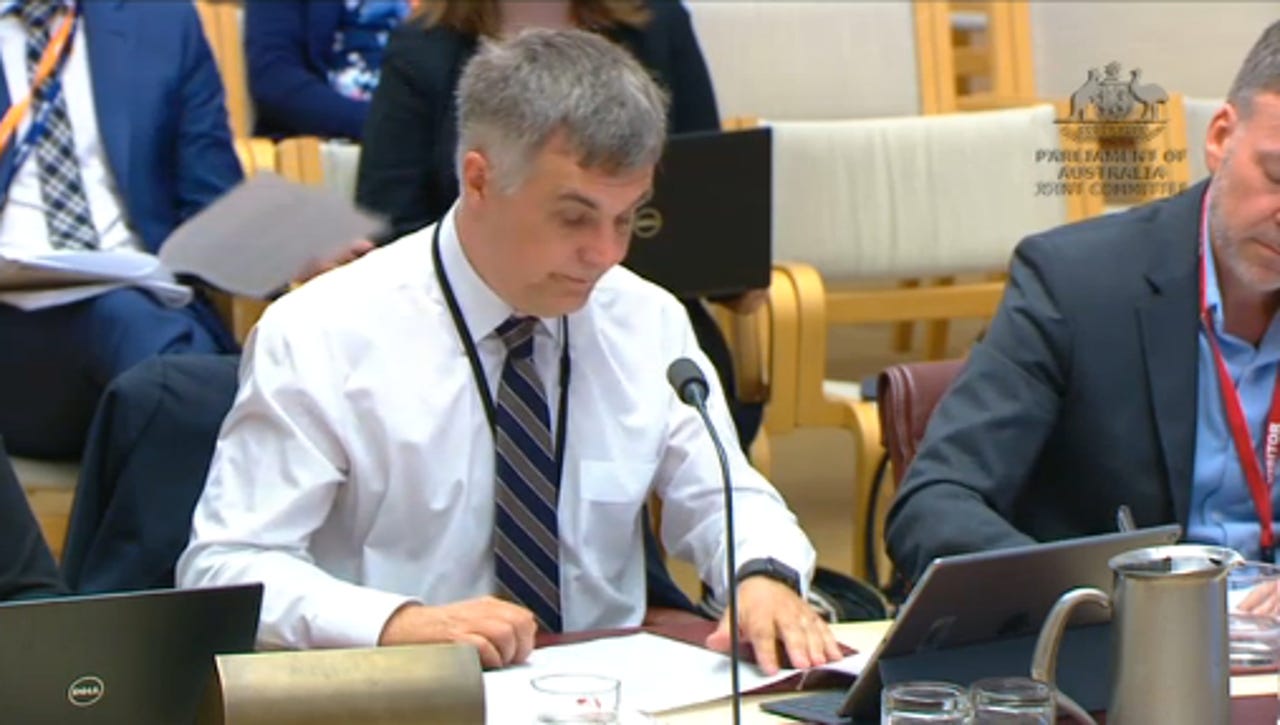Better long-term ROI pushed NBN to replace G.Fast FttC with full fibre lead-ins


NBN CEO Stephen Rue has explained why the company responsible for the National Broadband Network has reversed its previous plans to use G.fast for speeds higher than 250Mbps, and instead announced earlier this month that users would get full fibre upgrades.
In the current fibre-to-the-curb (FttC) footprint, due to the company wanting to have a diversity of suppliers, half of FttC connections can only be used with VDSL, while the other half can do VDSL and G.Fast, Rue explained.
"If we're going to provide higher speeds beyond 100Mbps to people, we wanted to look at the long-term, the 15-year roadmap if you like," he told Senate Estimates on Thursday.
"When we looked at it, we took the view that we're using G-Fast, there would still be things like copper remediation, there may be still some home wiring in the home, and it was also going to be IT system builds for us and the retailers, and a harder thing for retailers to manage because they'd have to explain what service they were getting.
"So we concluded that the best return on investment for those customers who wanted more than a 100Mbps was to provide a fibre lead-in."
Rue said it was not a complete abandonment of the technology and there could be situations where NBN would use it, but retailers would not need to know it was in use. Another factor in favour of full fibre was in the FttC footprint, as NBN had already pulled fibre down the street so it was already close to the premises.
"G.Fast absolutely could have delivered, certainly at 250 megs and above," Rue said. "There's no technical issue with G.Fast."
The CEO would not be drawn on how many fibre lead-ins NBN was expecting to build, and asked that the question be deferred to the next set of hearings that would be after the company released its next corporate plan.
In response to questions on notice, NBN said it had replaced approximately 47,700 NBN Co Connection Devices (NCDs) used on FttC connections across November to March as a result of severe weather.
The company further said, during 2020, it swapped 57,000 NCDs and so far this year it has replaced 44,300 NCDs.
In March, the company said it was looking for a long-term solution to lightning frying FttC equipment, which was highlighted in the Blue Mountains area of NSW.
On Thursday, Rue revealed NBN had issued around half a million devices that might go pop if struck by lightning, or lightning landed nearby.
"Investigations have found that in some instances a component in the device does not meet our design specifications and while these devices are failing in a safe way, it is happening more often than expected in selected areas causing a reliability issue for some customers," Rue said.
"In these areas, when a device does fail due to electrical over-stress, we are now replacing it with an NCD that meets our original design specifications, and is much less likely to fail again under similar circumstances.
"Approximately 500,000 devices with the component issue were deployed into the network as the issue coincided with our peak FttC deployment period."
Although the root cause has yet to be established, Rue said the company is implementing a "fast-track" solution that aims to detect a failed device and have a replacement device shipped to customers in 24 hours.
Amongst a bevy of questioning about its prime contracting arrangements, NBN revealed the issue with its technician workload software when it launched in New South Wales: It got overloaded.
"What happened, when literally it was rolled out in New South Wales, the platform went down and we then had, due to literally the doubling of our workforce on the system, we then add the issues around the functionality where it wasn't syncing properly, so therefore it caused a poor experience," COO Kathrine Dyer said.
The app uses ServiceMax that sits on top of the Salesforce platform, and it has a ServiceNow functionality in relation to scheduling and how work is fed into the ServiceMax tool, the COO said.
Dyer said the software was hit by a trio of factors: A two-day platform outage that hit NBN and technicians; it wasn't syncing; and it was updating its functionality.
"We were getting agile-based feedback from the sub-contractors in relation to the usability, and we were working with them, based on the feedback we were getting, to streamline the usability as we were rolling out the app," Dyer said.
Related Coverage
- NSW lightning and floods punish NBN FttC connection devices
- Budget 2021: NBN has repaid AU$5.5 billion of its AU$19.5 billion government loan
- NBN residential ARPU remains stuck at AU$45
- NBN looking at FttC upgrade to fibre if users want 250Mbps
- NBN nixes dark fibre talks as subcontractors protest pyramid contract model
- NBN floats soft cap to curb CVC cost spikes
- NBN raises $2 billion from US debt markets